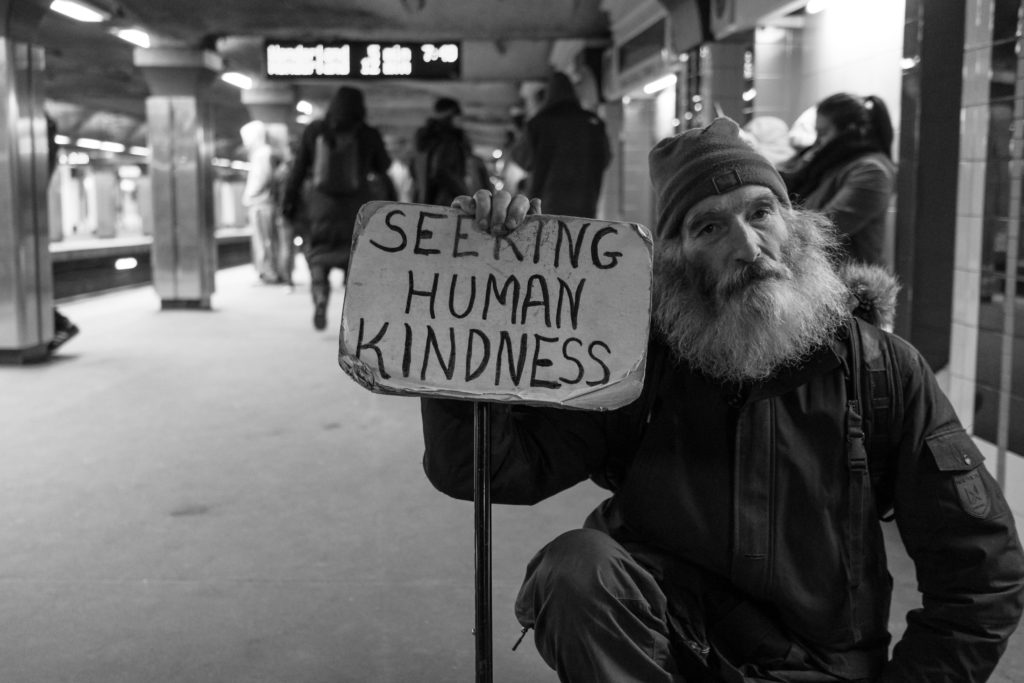On any given work day (or perhaps work night), elected officials from one of the 19,495 incorporated cities, towns and villages all across the United States are likely meeting to consider a proposal for a shelter or a proposed solution for the homeless neighbors in their communities.
On one side, there’s the applicant, often a nonprofit organization. On the other hand, you find neighbors near the proposed property who often say they support a shelter, just “not in my back yard” (NIMBY).
On January 20, 2021, a second of two such meetings took place in the city of Grants Pass, Oregon. There were no comments from the applicant. No comments from neighboring businesses. No comments from the community at large. Only leaders and staff spoke.
The shelter proposal passed 7-to-0.
This was surprising given the fact that 77% of the pages of written comments received prior were letters in opposition. One local observer noted that opposing leaders did an impressive job signing up people as if it were a petition. They went door-to-door, which isn’t easy during the coronavirus pandemic.
So, how did it actually happen that the City Council voted unanimously to approve the shelter?
The answer lies within seven strategies that addressed NIMBY unease:
Strategy #7 – Model
Several times, it was mentioned that the proposed Grants Pass Shelter would be modeled after the successful Kelly Shelter run by Rogue Retreat in Medford. The lack of negative impacts (i.e., crime, theft, violence, etc.) in that neighborhood were mentioned by the applicant as well as in the positive testimony of a woman who works in Grants Pass but lives just blocks from the Kelly Shelter in Medford.
Strategy #6 – Be Responsive
In a Zoom meeting two days prior to the first hearing, the potential loitering of homeless individuals waiting to get into the shelter on and around the property was a voiced concern. In response, the applicant suggested a solution: screening all shelter guests off-site at another location. In other words, no one would be coming to the shelter to get a bed, since screening will be done elsewhere.
Strategy #5 – Go Last
At the first meeting on January 6, the applicant spoke first and then had the opportunity to speak last, after the public commented “in favor” or “against” the proposal. The applicant took notes, especially when NIMBY fears were shared, such as loitering and public safety, then responded to these primary concerns. Being the last one to speak made a lasting impression on the City Council.
Strategy #4 – Access Indirect Experience (Research)
“Research in this book shows,” said one councillor holding up a copy of my Small Town, Big Problem book, “that the City of Ashland found that adopting the Kelly Shelter model resulted in a 92% reduction of police visits.”
There is also research that homeless shelters are not generators of crime. In fact, research from The Guardian (Portland, OR) found in two US cities that crime actually decreased rather than increased in neighborhoods with well-organized, well-run shelters. In fact, Kenneth Leon, a criminologist at George Washington University, notes that an organized shelter could actually be part of a community’s “crime prevention ecosystem.”
Strategy #3 – Get Staff Endorsements
A city staff person said on multiple occasions in the first hearing that all required land use and zoning concerns had been adequately addressed by the applicant.
Strategy #2 – Approval With Conditions
Most of the discussion amongst the City Council in the second meeting was spent debating how many times a day a special security outfit should drive by and from what time to what time. They settled on three “drive by’s” by a security company every hour from 6 am to midnight.
This helped address a NIMBY concern that there are children and clients of local businesses nearby who may be adversely impacted by homeless individuals coming in/out of the shelter as well as attracted to the proposed shelter building.
And, now the #1 strategy…
Strategy #1 – Get Direct Experience
The single greatest strategy for defeating NIMBYism was evident even before the first hearing began. When asked if there were any conflicts of interest before the meeting started, most, if not all, of the councillors mentioned that they had toured the Kelly Shelter in the previous few months.
Each expressed how impressed they were with how well the Kelly Shelter was run. “It is definitely not what I expected,” is a common response by people who take a tour of the facility.
It would be great if officials from every City Council across the nation had direct experience volunteering or work experience in a shelter or program serving their homeless neighbors. Unfortunately, few have. I don’t think any of these councillors had.
The next best thing to “lived experience” and direct service is visiting a well-run operation. It appears that most councillors had their greatest NIMBY-like concerns alleviated even before the hearings started.
It was clear to me that the direct experience of visiting a well-run shelter had had a tremendous impact on this group of elected leaders, perhaps the most important one when it came to unanimously voting to approve the shelter proposal.


